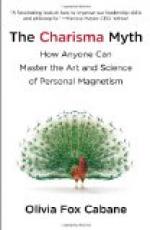In fact, in man’s spontaneous and immediate perception and apprehension of any object or external phenomenon, especially in early life, the innate effects are instantaneous, and correspond with the real constitution of the function; analysis and reflex attention necessarily and slowly succeed to this primitive animal act in the course of human development. Consequently the true character and value of its effect on the perception are the same in man and animals.
If in this psychical and organic fact of perception, man is at first absolutely in the conditions of animals, identical effects must be produced; and this was originally the case, as far as man himself and external things were concerned. The powerful self-consciousness which actuates man and animals alike is projected on the objects or phenomena perceived, and they see them transformed into living, deliberating subjects. In this way the world and all which it contains appears to be a congeries of beings, actuated by will and consciousness, and powerful for good or evil, and in practice they seek to modify, to encourage, or to avoid such influence. The ultimate effect of this action, assumed to be intentional in all and each of these subjects, will be their personification, either vaguely or definitely, but always as a power active for good or ill.
If we trace back the memories of historic and civilized peoples into the twilight of their origin, at a time when they were still barbarous, and little removed from their primitive savage conditions, we shall find, the further we go back, the more vivid, general, and multiform will the mythological interpretation and conception of the world and its various phenomena appear to be; everything was personified by these primitive peoples in a way common to the animal and human consciousness alike.
Of this the testimony remaining in the most ancient verses of the first Veda is a sufficient proof. At the epoch of their composition the human race had made some relative progress in morals and civilization; yet we find that psychical human life was transfused and projected into everything: man personified each phenomenon and force of nature in accordance with his own image.
For example, fire in general was personified and identified with humanity in Agni; even the shape taken by the flames, all which was required to light the fire, the whole process of the sacrifice, even the doors of the altar-railing, the prayer and oblation to the god.[9]
We also learn from the solemn and ancient songs of the Rig-Veda that all terrestrial, meteorological, and celestial phenomena were more or less vaguely personified. These facts recur in all the earliest recollections of civilized peoples. If we turn from these to observe the savage races of modern times, and the most barbarous tribes still extant in continents and isles far removed from culture and science, we shall again find the same beliefs. The range of absurd personifications, degenerating into the most trivial and varied forms of fetish worship, becomes wider, and its influence deeper, in proportion to the rude and barbarous condition of the tribe or stock in which they appear.




